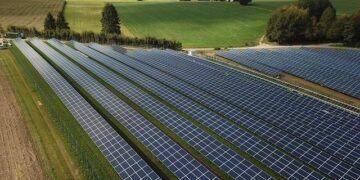Growing Connections: The Impact of Trees on Community Well-Being and Forest Environment
Introduction to Urban Forestry
In an era where urbanization continually reshapes our landscapes, understanding the integral role of trees becomes paramount. Various studies have highlighted how green spaces, particularly those enriched with trees, are crucial for the health of communities as well as their ecosystems.
Trees: Nature’s Vital Organizers
Trees do much more than enhance aesthetic appeal; they perform essential environmental functions. Acting as natural air purifiers, trees absorb pollutants such as carbon dioxide and release oxygen through photosynthesis. This vital process not only improves air quality but also contributes to climate regulation.
Statistics Underlining Environmental Benefits
Research indicates that a single mature tree can absorb approximately 48 pounds of carbon dioxide annually while producing enough oxygen for two human beings to breathe for a year. Moreover, forests cover roughly 31% of the Earth’s land area, according to the Food and Agriculture Organization (FAO), underlining their global significance in combating climate change.
The Ecological Web: Relationships Within Forests
Forest ecosystems are complex communities comprised not just of diverse plant species but also a multitude of organisms that rely on one another for survival. From symbiotic fungi aiding tree growth to insects pollinating flowers, these interdependent relationships form resilient systems capable of withstanding environmental changes.
Case Studies in Biodiversity Resilience
For instance, temperate rainforests in regions like Washington State boast some of the highest biodiversity levels on Earth. These forests provide habitat for countless species while simultaneously supporting critical ecosystem services such as water filtration and soil stabilization.
Social Health: How Green Spaces Foster Community Well-Being
The presence of trees extends far beyond ecological benefits; it significantly impacts human health too. Access to green spaces has been linked positively with enhanced mental health outcomes and increased physical activity levels among residents. Parks adorned with lush vegetation create inviting environments that encourage social interaction and community cohesion.
Recent Research Findings
According to a study by the University College London published in 2021, individuals living within close proximity to parks experience lower stress levels compared to those without such access—highlighting how nature acts as a catalyst for improved overall well-being.
Tree Planting Initiatives: Engaging Communities
Community-driven initiatives focusing on tree planting have gained traction across various cities globally. Programs designed around engaging local populations empower them not only by enhancing their neighborhoods but also educating them about sustainability practices and environmental stewardship.
Examples from Around the Globe
Cities like Melbourne have implemented extensive urban forestry projects aimed at increasing canopy cover while promoting biodiversity within urban settings—a model being replicated worldwide from San Francisco’s Million Trees Project to Karachi’s Green Neighborhoods initiative.
Conclusion: Nurturing Nature for Future Generations
Fostering sustainable relationships between people and nature requires prioritizing ecological education alongside active participation in conservation efforts. By ensuring that future generations cherish our planet’s green resources through meaningful interactions today—community resilience will continue thriving alongside robust forest ecosystems into tomorrow’s landscape.





























